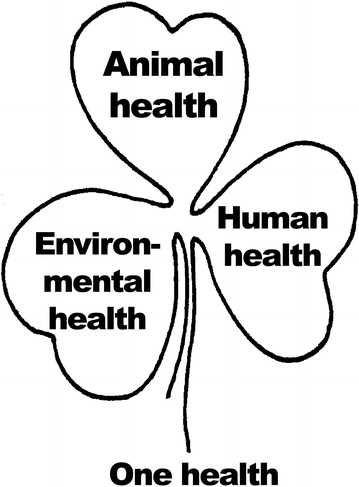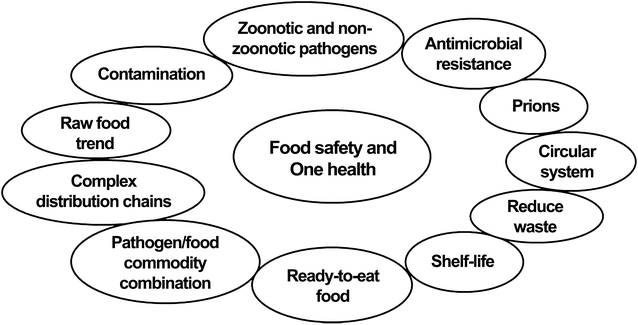Food safety challenges and One Health within Europe
- PMID: 29298694
- PMCID: PMC5751857
- DOI: 10.1186/s13028-017-0355-3
Food safety challenges and One Health within Europe
Abstract
This review discusses food safety aspects of importance from a One Health perspective, focusing on Europe. Using examples of food pathogen/food commodity combinations, spread of antimicrobial resistance in the food web and the risk of transmission of zoonotic pathogens in a circular system, it demonstrates how different perspectives are interconnected. The chosen examples all show the complexity of the food system and the necessity of using a One Health approach. Food safety resources should be allocated where they contribute most One Health benefits. Data on occurrence and disease burden and knowledge of source attribution are crucial in assessing costs and benefits of control measures. Future achievements in food safety, public health and welfare will largely be based on how well politicians, researchers, industry, national agencies and other stakeholders manage to collaborate using the One Health approach. It can be concluded that closer cooperation between different disciplines is necessary to avoid silo thinking when addressing important food safety challenges. The importance of this is often mentioned, but more proof of concept is needed by the research community.
Keywords: Antimicrobial resistance; Bovine spongiform encephalitis; Foodborne disease; Foodborne outbreak; Listeria monocytogenes; Norovirus; Raspberries; Shiga toxin-producing Escherichia coli; Sprouted seeds.
Figures
References
-
- FAO–OIE–WHO Collaboration. Sharing responsibilities and coordinating global activities to address health risks at the animal–human–ecosystems interfaces. A tripartite concept note. 2010. http://www.who.int/foodsafety/zoonoses/final_concept_note_Hanoi.pdf. Accessed 10 Oct 2017.
-
- Schwabe CW. Veterinary medicine and human health. 3. Baltimore: Williams & Wilkins; 1984.
-
- Hald T, Vose D, Wegener HC, Koupeev T. A Bayesian approach to quantify the contribution of animal-food sources to human salmonellosis. Risk Anal. 2004;24:255–269. - PubMed
Publication types
MeSH terms
LinkOut - more resources
Full Text Sources
Other Literature Sources
Medical



